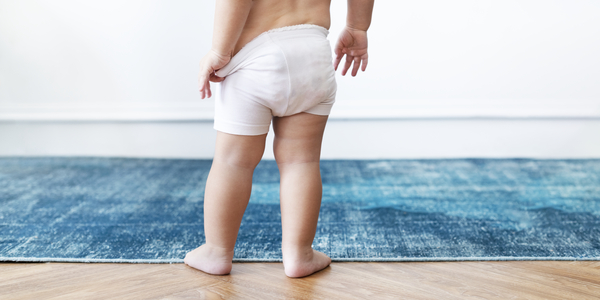[the_ad id=”6076″]
Diaper rash is a common concern among parents and caregivers, affecting infants and young children. This painful skin condition is characterized by redness, inflammation, and discomfort in the diaper area. Understanding the causes, prevention, and treatment of diaper rash is essential to ensure the well-being of your child. In this article, we will explore diaper rash from a medical perspective, and we will also touch on the use of calendula ointment, a potential remedy from the realm of homeopathy.
Causes of Diaper Rash
Diaper rash can develop for various reasons, but it is most commonly associated with prolonged exposure to moisture and friction. The main culprits include:
Irritation from Wetness: Prolonged exposure to urine and stool can irritate the skin, leading to diaper rash. Urine contains ammonia, which can be harsh on delicate baby skin. Cloth diapers or traditional nappies tend to remain wet for long as compared to the synthetic diapers.
Friction: The rubbing of a diaper against the skin can cause irritation. This is especially common in ill-fitting diapers or when diapers are not changed frequently enough. Some diapers have a plastic-like feel to them, which leads to increased friction.
Chemicals in Diapers or Wipes: Some infants may be sensitive to the chemicals or fragrances in disposable diapers or wipes.
Bacterial or Fungal Infections: Yeast (Candida species) or bacterial infections can also contribute to diaper rash. These infections often result from the warm, moist environment created by diapers.
Prevention of Diaper Rash
Preventing diaper rash is crucial for your baby’s comfort. Here are some strategies to help minimize the risk:
Frequent Diaper Changes: Change your baby’s diaper as soon as it is wet or soiled, and use a gentle, hypoallergenic wipe for cleaning.
Allow Air Exposure: Give your baby some diaper-free time each day to allow their skin to breathe.
Choose the Right Diapers: Select diapers that fit well and are appropriate for your child’s age. Consider organic, cotton-based, hypoallergenic, biodegradable or cloth diapers if your baby is experiencing recurring diaper rash.
Avoid Harsh Chemicals: Be mindful of the diapering products you use. Fragrance-free and hypoallergenic options are typically gentler on the skin. Some biodegradable ones are easy on skin and the planet; however, these can be pricey.
Use Barrier Creams: Apply a diaper rash cream with zinc oxide or petroleum jelly to create a protective barrier between the skin and moisture. This is the best strategy to use.
Treatment of Diaper Rash
If your child does develop diaper rash, there are effective treatment options:
Keep the Area Clean and Dry: Gently clean the affected area with mild soap and water and pat it dry. Avoid scrubbing, which can worsen irritation.
Apply Diaper Rash Cream: Over-the-counter creams containing zinc oxide or petroleum jelly can help soothe and protect the skin.
Antifungal Creams: If there is excessive itching, tiny blister-like rash or you suspect a yeast infection, an antifungal cream may be prescribed by a healthcare professional.
Medicated Ointments: In more severe cases, a doctor may prescribe hydrocortisone cream to reduce inflammation and itching.
The Role of Calendula Ointment in Diaper Rash (Homeopathic Perspective)
In homeopathic medicine, Calendula officinalis, more commonly known as calendula, is often used for its healing properties, including its ability to soothe and promote skin health. Calendula ointment is considered by some practitioners as a natural remedy for diaper rash. It is believed to have anti-inflammatory and antimicrobial properties, which can help alleviate the discomfort associated with diaper rash.
However, it’s essential to note that while most parents find relief with the over-the-counter calendula ointment, this blog cannot be seen as a substitute to medical advice.
When to consult a Healthcare Professional?
If the rash is persistent, severe, or accompanied by other symptoms, consult a paediatrician for further evaluation.
Conclusion
Diaper rash is a common, uncomfortable condition that can affect infants, young children and albeit rarely adults using diapers for incontinence.
Understanding the causes, prevention strategies, and available treatments is essential for the well-being of your child/elderly.
While homeopathic remedies like calendula ointment may be considered, it is crucial to consult with a healthcare professional to determine the most suitable and effective treatment for your patient’s diaper rash. In the end, keeping the skin clean, dry, and well-protected remains the key to preventing and managing diaper rash.

